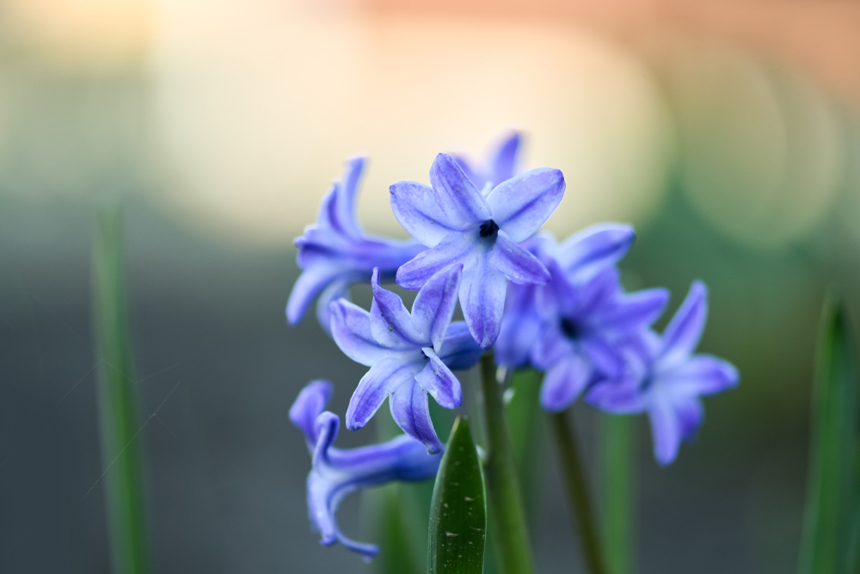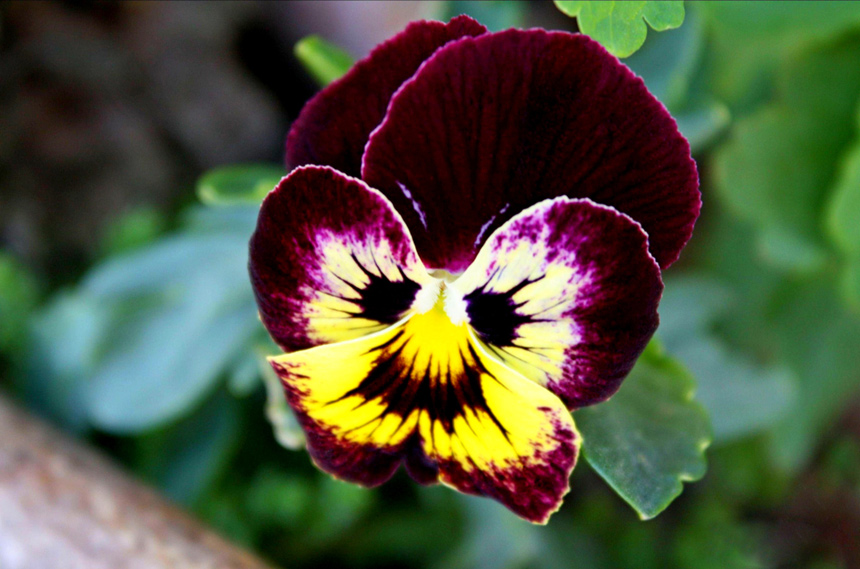In a Word: An Anthology of Spring Flowers
Managing editor and logophile Andy Hollandbeck reveals the sometimes surprising roots of common English words and phrases. Remember: Etymology tells us where a word comes from, but not what it means today.
The warming spring means Mother Nature is bursting with new color from buds and blooms. Many of these flowering plants get their names from pretty unremarkable sources. For example, some were named after people, like the magnolia (after French botanist Pierre Magnol), freesia (German physician Friedrich H.T. Freese), and forsythia (British botanist William Forsyth). Others were named simply for the way they look: Bluebells, for example, are so called because their blooms are blue and bell-shaped.
But many of the flowers you’ll see this spring bear names of more surprising origins, some that go back millennia. Read on for a short anthology of the stories behind the names of some of the plants you might see blooming this spring.
Why an anthology? The word comes from Greek roots that mean “flower gathering.”
Daffodil
The Middle English affodill stretches back to the Greek asphodelos, a flower said to bloom eternally in the Elysian Fields, where the blessed reside after death in ancient Greek myth. Exactly where the word asphodelos came from, no one is sure.
During the 16th century, daffodil bulbs came to Britain from the Netherlands, and the flower likely got its modern name from the contraction of the Dutch de affodil.
Hyacinth
In ancient Greece, hyakinthos was the name of both a blue gemstone and a purple or red flower — though we’re not sure exactly which one. The creation of the flower, though, is explained in Greek mythology: Hyakinthos (or Hyacinthus) was a Spartan prince who was much loved by the god Apollo. One day, the two were throwing the discus around. Apollo gave it a really hard throw, and Hyakinthos, laughing, chased after it, but the discus struck him in the head and killed him. To honor him, a distraught Apollo caused a flower — the hyacinth —to spring up from the boy’s blood.
In another version of the story, the death isn’t accidental: Zephyr, the west wind, was also quite fond of Hyakinthos. In this story, he was jealous of Apollo’s relationship with the boy, and so Zephyr intentionally blew the discus off course, causing it to strike Hyakinthos in the head.
Hyakinthos entered Latin as hyacinthus, but in Medieval Latin became jacintus, and in Old French jacinte — which gave us the name of the reddish-orange gem called jacinth. But in the mid-16th century, the word was “re-Greeked” to become hyacinth for the name of the flower. However, the flower we call hyacinth today very likely not to be the same flower the ancient Greeks called hyakinthos.

Pansy
At the end of Act IV of Hamlet, Ophelia, who is losing her mind, comes in singing and handing out various plants she has collected outdoors: “There’s rosemary, that’s for remembrance; pray you, love, remember: and there is pansies, that’s for thoughts,” she says. Shakespeare’s connecting pansies and thoughts isn’t capricious; the word pansy comes from the French word for “thought,” pensée.
In Victorian England, where public displays of affection were taboo, pansies were exchanged as a secret sign of attraction. A young man might sneak a pansy in to a woman to indicate that he is thinking of her — in a romantic way. Some types of pansies are also called heart’s ease or love-in-idleness, calling to mind the idea of a young man pining away with thoughts of his love.
In German, on the other hand, the pansy is called Stiefmütterchen, meaning “little stepmother.”

Peony
People have long recognized the medicinal value of the peony and have used its roots, flowers, and seeds to ease pain. It made sense, then, to name the plant after the physician of the gods, Paean (or Paieon or Paion). Does it seem odd that the supposedly immortal and impervious Greek gods would need a physician? While your average human is no threat to the deities, they do occasionally injure one another. In the Iliad, Ares is wounded by the mortal Diomedes — with Athena’s help — and Paean is called upon to salve his divine wounds.
From this root came the Old North French name pione, which in the 16th century merged with the Middle English pyony to become the modern peony.
Tulip
Many of these flowering plant names come from Greek mythology. Tulips, both the flower and the name, come from the Mediterranean too, but a little farther east. This favorite flower of the Netherlands was introduced into Europe from Turkey, and it takes its name from the (Latinized) Turkish word for “turban,” tülbent, because of the flower’s resemblance to the headdress.
In Latin, the flower became tulipa. The word kept its full form when it entered Spanish (tulipan) and Italian (tulipano), but in English, the -an was dropped, probably under the assumption that it was a suffix, and so today we tiptoe through the tulips.

Signs of Spring in a Small Town
Every year, I circle the vernal equinox on our refrigerator calendar so the first day of spring won’t slip by unnoticed. I’m not sure why I depend upon the calendar to announce spring’s arrival, since it has so little bearing on the matter. Spring comes when it’s good and ready; sometimes well before March 21, sometimes well after.
For years, spring in our town was heralded by Leon and Jo Martin, who owned the Dairy Queen. Every year, after their winter sojourn to Florida, they would post the words “Now Hiring” on their sign. I would walk past, see the sign, see Leon and Jo readying for their spring opening, and feel winter’s icy veil lift from around me. It was as accurate an indication of spring as any calendar, and when they died and their children sold the Dairy Queen to an out-of-town outfit who kept it open year-round, it threw off our town’s circadian rhythms something terrible. We’re still not sure when spring begins.
Well, that’s not entirely accurate. When the implement store on the west edge of town, where Johnston’s IGA used to be, stops selling snow plows and starts selling lawn mowers, that’s a pretty good sign winter’s grip has loosened. If they should drop the ball, Frank Gladden is sure to stand at our Quaker meeting and announce that volunteers are needed for our spring fish fry. Frank’s announcement is as reliable as any clock, and invariably tinged with worry and regret that this might be the last year of the fish fry if volunteers aren’t forthcoming.
“We’re not getting any younger,” he announces to the congregation. Frank is 80 years old, but he’s been saying that since 1961, so we Quakers aren’t alarmed. The Fairfield Friends Fish Fry is as constant as sunrise. If Jesus were to return on the clouds the day before the fish fry, the men would soldier on, undeterred.
When the implement store on the west edge of town stops selling snow plows and starts selling lawn mowers, that’s a pretty good sign winter’s grip has loosened.
But let us suppose both the implement store and Frank Gladden neglect their duties and we are cast adrift, oblivious to spring’s arrival. We would then have to look and see whether Bill Eddy, our town’s plumber, was wearing a coat. When the first leaf withers and falls to the ground in autumn, Bill pulls on his tan Carhartt coat and doesn’t remove it until spring. I’ve known Bill since we were in first grade together, so am well-acquainted with his habits. He wears the coat inside and outside, and if he takes a week off in February to take his wife on a cruise, you can bet he’ll still be wearing his coat while floating around the Caribbean. No matter where he is, his internal thermostat is set for Indiana.
There are other signs of spring if one is watchful. The deer lighten in color, the dog sheds, the buds swell, the snow melts on the south hillside, and the bloodroot in our woodlot pushes out its petals. The calf appears, tethered to its mother by bonds of hunger. The farmer casts the manure upon the field, thoughtfully provided by the aforementioned calf and mother. Who needs a calendar when a calf is nearby?
Nothing seems impossible in spring — a cure for cancer, wisdom in Washington, weight loss. Anything can happen, and often does. I proposed to my wife a dozen times in the winter and was denied each time, so I waited until spring and popped the question a 13th time, an unlucky number, but even superstition takes a backseat to the glories of spring, and she consented. Engaged one spring, married the next. Between that and the Dairy Queen, what more could one want?
Philip Gulley is a Quaker pastor and the author of 22 books, including the Harmony and Hope series featuring Sam Gardner.
This article appears in the March/April 2018 issue of The Saturday Evening Post. Subscribe to the magazine for more art, inspiring stories, fiction, humor, and features from our archives.